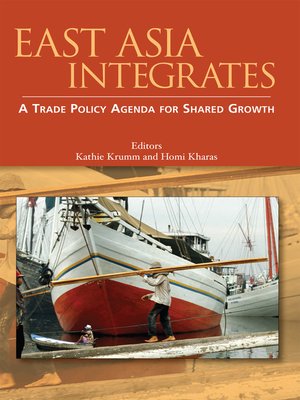East Asia Integrates
ebook ∣ A Trade Policy Agenda for Shared Growth · Trade and Development
By Kathie Krumm

Sign up to save your library
With an OverDrive account, you can save your favorite libraries for at-a-glance information about availability. Find out more about OverDrive accounts.
Find this title in Libby, the library reading app by OverDrive.



Search for a digital library with this title
Title found at these libraries:
| Library Name | Distance |
|---|---|
| Loading... |
Emerging East Asian economies have seen their share of world exports more than triple during the past quarter-century, and intraregional trade has driven this growth. Broad measures of development in East Asia have improved at the same headlong pace. Why push further integration now? Two economic events of historic proportions provide the context: strategic thinking of development in the region following the East Asian financial crisis of 1997-98 and the accession of China to the World Trade Organization. Policymakers interested in a stable, prosperous region are concerned by mildly rising inequality within countries and a widening gap between richer economies and the poorest economies. Increasingly, the development agenda in the region - with its focus on growth, jobs, and social stability - and the trade policy agenda - with its focus on market access and competitiveness - have become intertwined.
East Asian policymakers seek to develop a coherent set of economic policies that can deliver stability, growth, and regional integration. Without attempting to be comprehensive, East Asia Integrates offers fundamental strategies that promote cross-border flows of trade, along with domestic policies on logistics, trade facilitation, standards and institutions to maximize the impact of these flows on development and distribute the gains from trade widely.
As the authors demonstrate, multilateral and regional trade initiatives must provide a compelling vision of how integration can deliver broadly shared growth and prosperity if they are to succeed. In addition, they must use the momentum offered by trade agreements to address the links between trade on the one hand, and social stability, poverty reduction, and growth on the other.







